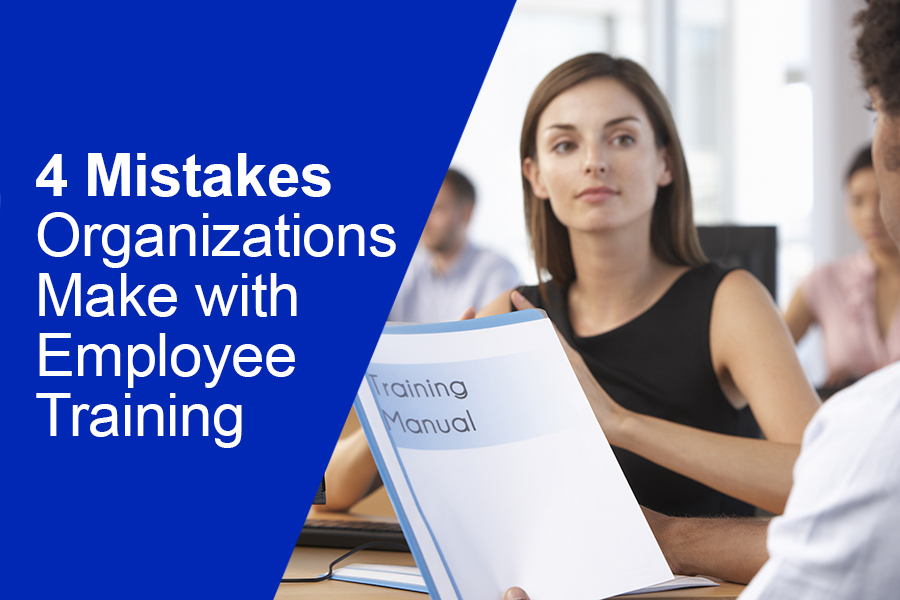
Workplace training isn’t a nice-to-have; if you want skilled, engaged employees who stick around, it’s a necessity. Also, your company can be on the hook if you don’t educate your staff on issues such as sexual harassment and diversity.
American companies spend enormous amounts of money training employees every year—an estimated $160 billion. But too often, these efforts are wasted for a number of different reasons. Here are four common mistakes companies make around employee training:
-
They only train new employees.
If you think onboarding a new worker counts as all the training they need, you’re mistaken. To meet management’s expectations, advance their careers and keep your business compliant with government regulations, employees need to be continuously learning.
So, how often should you be offering to educate your staff? That depends. You should do a training needs assessment to help you make a data-informed decision.
You can also encourage your employees to be proactive by choosing conferences and/or courses they’d like to participate in. Many organizations offer employees paid education as a perk, which is a great way to enable staff to get the curriculum that’s right for them.
-
The material is outdated or boring.
If you try to educate your staff in a stuffy classroom with an uninspiring teacher or ask them to complete an online module that’s laden with statistics, they’re not going to enjoy the experience or get excited about learning. They probably won’t retain the info you want them to—they’ll be too busy zoning out.
I can give you access to over 275 web-based training courses created and led by experts in their field. From management skills, customer service and workplace safety to sexual harassment, these courses increase employee knowledge, retention and motivation. Learn more here.
-
It’s a one-size-fits-all curriculum.
Too many companies take a blanket approach when it comes to employee training. Not only are their learning needs different, so are their learning styles. I’ve talked before about how there are three different types of learners: visual, auditory and kinesthetic.
A visual learner will be most engaged and retain more when you use images, whiteboards and videos. Auditory learners are happy to sit through a lecture; they’re great listeners and stats show they remember up to 75% of what they hear. Kinesthetic learners make decisions based on how they feel, so incorporating activities helps them learn best.
Targeting what each person needs to develop and how they learn is the best way to develop your team and build a high-performing business.
-
They don’t understand legal, financial and reputational risks.
Whether you’re a small business or a Fortune 500 company, you’re at risk of employment-related lawsuits. Plaintiffs win 51 percent of the time when employment practices liability claims go to trial, according to Westlaw, a legal research service by Thomson Reuters. And the majority of claims are settled out of court, which translates into thousands—oftentimes hundreds of thousands of dollars—being paid by the business owner to make the claim go away.
Whether you’re training employees who are new to the company or people who have been with you for years, everyone must understand the consequences of illegal behavior. This also protects your company; carefully documenting employee training gives you solid proof that you did educate your staff and prevents them from claiming they weren’t aware of a policy.
Implementing the best educational programs is necessary for your organization’s safety, security and productivity. And just as importantly, your team wants to know you care enough about them to help them develop personally and professionally.
Have you heard of a CORE Map Assessment? It’s the best way to build your team by putting them in positions they will excel at. It also helps them get past the false perceptions that could be leading them down the wrong path and keeping them from reaching their full potential.
Only a CORE Map Assessment can measure and correct self-perception, determine natural and conditioned behaviors, pinpoint emotional intelligence and more. Learn more.
Business Leadership, Business Management, Career Management, Team Management